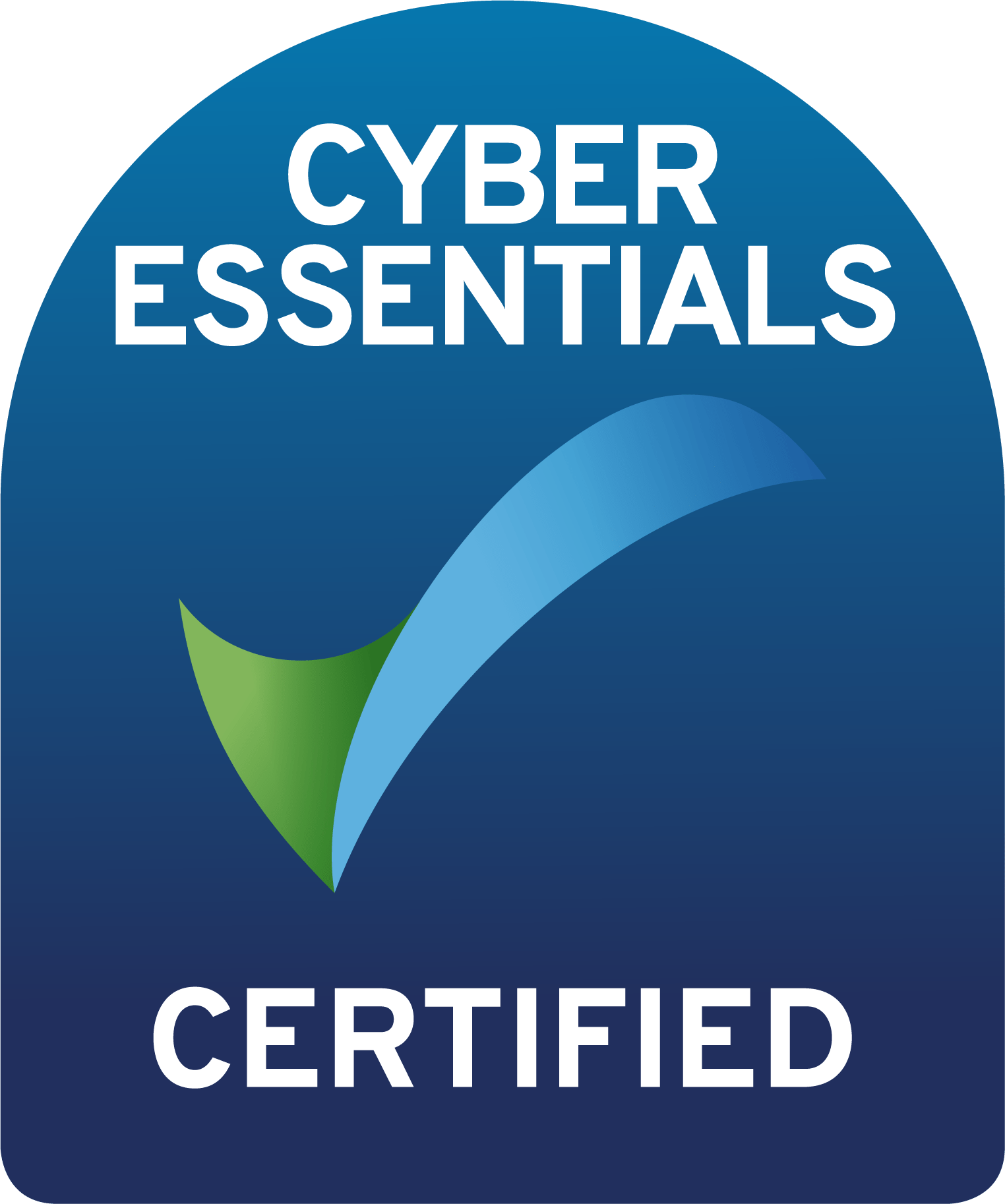





HR Senior People Professional Level 7 Apprenticeship
The next step within a professional career in human resources/learning and development!
A Senior People Professional will improve people practices in organisations in order to drive organisational performance and effectiveness.
Senior People Professionals may specialise in either Human Resources (HR), Learning and Development (L&D) or Organisation Development (OD). This Apprenticeship Occupational Standard takes a core and options approach.
All apprentices will complete the core and must select the one most appropriate option to their role from the following: Senior Human Resources (HR) Professional, Senior Learning & Development (L&D) Professional, Senior Organisation Development (OD) Professional.
Looking for a new career, job or maybe a qualification to take your current role to the next level?
Previously apprenticeships were primarily aimed towards 16-18 year olds but government reforms introduced in March 2017 mean that there is no longer an upper age limit for commencing an apprenticeship, even if you already possess a degree or higher level qualification (all applicants must be eligible for funding).
Starting an apprenticeship is dependent on your age and whether you have secured an offer of an apprenticeship from an employer.
You can apply for an apprenticeship while you’re still at school, but you cannot start until you have officially left school and completed your exams.
You need to be 16 or over by the end of the summer holidays to start the apprenticeship. You may start an apprenticeship at 15 years of age if your 16th birthday is between the last Friday of June and 31st August and provided you have completed your exams.
Provided you have left school and have an employment offer in place, then starting employment as an apprentice can occur throughout the year.
If you successfully apply for a vacancy, you may be able to start employment straight away.
Likewise, if you are already in employment and your employer is looking to train you through an apprenticeship, sign-up and enrolment can take place quite quickly.
However, the start date for attending college for training, where required, or if delivered online, when sessions begin, will vary depending on the type of apprenticeship.
Some apprenticeships will have fixed attendance with training on-campus commencing at the start of the autumn term, with no availability for starting the training mid-year.
For other apprenticeships where the training is delivered entirely online, it may be possible to commence the training immediately.
Whichever delivery method applies, this will be communicated to you and your employer post-employment and sign-up.
If you are ready to make an application then please click the Apply Online button in the menu below.
| Level | Level 7 |
|---|---|
| Location | Colchester |
| Duration | Typically 30-36 months |
| Campus / Adult Skills Centre | Colchester Campus |
| Additional Cost Information | Optional Qualification: |
| Apprenticeship Funding Band (Levy paying employers) | £19,000 |
| Employer Contribution Fee (Non-levy paying employers) | £950 |
This apprenticeship programme is designed for those who want to develop into a Senior People Professional role, with support from their employer to facilitate their progression.
This programme is suitable for
- individuals who have completed a Level 5 Apprenticeship in a Human Resources field and are ready to move into a more senior management or strategic role
- those currently working at an operational level who want to move into a more senior management or strategic role
- individuals working in a management role but not within Human resources or Learning and Development
- those who are part of a fast track graduate programme.
Senior People Professional
This occupation is found in small, medium and large organisations which sit within any of the public, private or third sectors. Senior People Professionals are found in all industries and are a key component of virtually all types of business model where there is a workforce to support and manage.
The broad purpose of the occupation is to improve people practices in organisations in order to drive organisational performance and effectiveness. Senior People Professionals are the in-house experts in people, work and change. They champion the people agenda to create working environments and cultures that help get the best out of people, delivering great organisational outcomes.
In their daily work, an employee in this occupation interacts with a range of stakeholders across their organisation, creating medium to long-term value for a wide audience. In larger organisations, they may be part of a wider specialist team. They may also lead a team of HR/L&D/OD consultants/advisers. In smaller organisations, they might be solely responsible for the entire people agenda and report directly to the organisation lead. At this level, Senior People Professionals are ambassadors for their organisations and will typically have wide-ranging networks and need to interact with a wide range of internal and external senior stakeholders.
An employee in this occupation will be responsible for applying their knowledge and expertise to lead the design, implementation and evaluation of people policies and practices aligned to the needs of the organisation and its employees. They will be responsible for leading people projects and/or playing a key role in larger organisation-wide programmes, managing their own work with a high level of autonomy. Senior People Practitioners have to keep up to date with relevant legislation and regulation and make timely interventions to ensure their organisation’s relations with its people are effective and compliant.
Senior People Professionals engage with a wide range of stakeholders, including developing and maintaining strong relationships with senior stakeholders to facilitate engagement on people issues. Keeping up to date with key trends and developments in the profession is critical to this occupation. Analysis of future workforce trends and providing insight around people analytics is an essential responsibility which enables Senior People Professionals to influence senior stakeholders and make recommendations for change.
Senior People Professionals are increasingly responsible for seeking out, evaluating and utilising technology to deliver the people strategy. Typically, Senior People Professionals have some budget responsibility and will be expected to employ continuous improvement approaches to maximise the use of limited resources.
DUTY | KSBS |
|---|---|
Duty 1 Lead the design, creation, implementation and review of people policies and practices aligned to the needs of the organisation, Critically evaluate a range of people practices to ensure fit for purpose and review as appropriate. | K1 K3 K8 |
Duty 2 Using critical analysis and evaluation of internal and external factors contribute to the development of the wider organisational people strategy and lead on the implementation of a workstream (e.g. HR/L&D/OD) relevant to the role. | K3 K4 K8 |
Duty 3 Manage and lead people projects and lead the people element of broader organisation wide projects and programmes. Critically analyse, interpret and evaluate complex information, concepts and problems to develop business cases for change and evaluate and apply appropriate change management methodologies. | K6 K11 K12 |
Duty 4 Assess both current and future workforce needs, building future capability and talent and actively contribute to the organisation’s strategic workforce planning or talent management processes. | K5 K7 K8 K9 |
Duty 5 Proactively develop and maintain relationships with senior stakeholders in order to communicate, engage, influence and challenge effectively in order to achieve the people strategy and represent the organisation externally. | K3 K9 K10 |
Duty 6 Bring together the right people to ensure resource availability to drive sustained commercial success and value for people. Manage a budget and people metrics, review and forecast spend relating to the workforce. | K4 K7 K10 |
Duty 7 Select and implement appropriate technology to deliver the people strategy, policy and practices, taking into account the risks, opportunities, impact and value of technology. Seek out, critically evaluate and utilise technologies to drive a continuous improvement approach. | K4 K5 K6 |
Duty 8 Review and critically evaluate current and future trends to ensure organisation effectiveness and commercial awareness. Interpret people analytics to provide insight, make recommendations, and to influence senior stakeholders regarding organisation decisions. | K3 K4 K10 |
Duty 9 Proactively shape and drive the organisation’s culture and role model the organisations core values and beliefs, creating working practices that reflect the organisation’s culture, core values and beliefs. | K2 K8 |
Duty 10 Integrate diversity and inclusion into people and wider organisation approaches. | K2 K8 |
Duty 11 Proactively keep up to date with external trends and developments, both in the people profession and wider context (relevant to your role) and take responsibility for the development of other people professionals, managers and leaders, including providing coaching and mentoring where appropriate. | K5 K9 |
Duty 12 Keep up to date with and interpret relevant legislation and regulation, such as employment law, ethics, equality and diversity and critically evaluate relevant organisation people policies and practices to ensure compliance and mitigate risk. | K1 K6 |
DUTY | KSBS |
|---|---|
Duty 13 Lead and advise on complex HR and employment issues & practices to mitigate risk and maximise effectiveness. | K1 K23 K24 |
Duty 14 Create and sustain a positive employee relations climate to ensure the relationship between the organisation and its people is managed through its practices and relevant law. | K1 K2 K12 K23 K24 |
Duty 15 Critically evaluate, develop and implement approaches to maximise employee engagement within the organisation. | K2 K8 K12 K21 |
Duty 16 Champion, design and implement approaches to employee well-being across the organisation. | K2 K8 K12 K21 |
Duty 17 Critically analyse, design and implement people reward strategies to attract, motivate and retain employees. | K3 K22 |
Duty 18 Critically analyse and review approaches to managing performance across the organisation, design and implement changes where appropriate. | K1 K8 K9 K24 |
DUTY | KSBS |
|---|---|
Duty 19 Critically analyse and evaluate the formulation and implementation of the learning and development strategy ensuring it is underpinned by the full learning cycle, ensuring the creation of an organisation learning culture that shapes and ensures continuing professional development. . | K4 K17 K19 |
Duty 20 Critically evaluate, select and apply a range of approaches and processes to establish learning and development needs at an organisational, group/team, occupational and individual level in collaboration with relevant senior stakeholders. | K3 K4 K18 |
Duty 21 Critically evaluate a range of learning design theories, channels, methods and approaches in order to select the appropriate solutions which will meet organisation wide development needs. | K5 K17 K18 K19 |
Duty 22 Initiate and drive an appropriate coaching and mentoring strategy and culture to enhance the effectiveness and capability of the organisations people. Critically analyse and develop the coaching and mentoring capability and capacity to ensure it drives performance and/or supports the culture of the organisation. | K2 K9 K17 K18 |
Duty 23 Select and use complex or sophisticated facilitation techniques in order to facilitate complex events, development interventions and discussions to support senior colleagues, groups and teams to achieve a desired successful outcome. | K17 K18 K20 |
Duty 24 Design and implement appropriate evaluation strategies and methods to assess the effectiveness of learning plans and interventions. | K4 K10 K17 |
DUTY | KSBS |
|---|---|
Duty 25 Critically evaluate overarching organisation strategy and establish organisation development needs through using a range of consulting processes, styles and diagnostic tools and methodologies. | K2 K10 K12 K14 |
Duty 26 Lead the design, creation and review of a range of organisation development interventions in order to improve organisational effectiveness and performance. | K2 K6 K11 K15 |
Duty 27 Actively measure organisation culture and critically analyse, select and implement different approaches to culture development. | K2 K6 K13 |
Duty 28 Apply models of systemic thinking to a range of people practices. | K1 K4 K5 K16 |
Duty 29 Critically evaluate and implement appropriate organisation design structures to align with business needs and improve performance. | K2 K14 |
Duty 30 Critically evaluate and apply work design choices (who does what/how work is done). | K5 K6 K7 K14 K21 |
What knowledge, skills and behaviours are covered?
Knowledge
K1: The employee lifecycle and the range of people practices that underpin it, including relevant regulation, compliance, governance and relevant law and how to develop policy in line with this.
K2: Organisational culture, theories and concepts, organisational behaviour, models and theories of human behaviour, ethics, values and beliefs.
K3: Business acumen, including organisational strategy creation, strategic planning tools (including business cases) and trends in the wider business context as well as drivers of organisational performance and methods of measuring organisational data. Knowledge of financial and commercial information and value for money principles.
K4: Methods of measuring value and impact and types of analytical tools relating to creating value for an organization as well as methods of evaluating opportunity costs including qualitative and quantitative metrics.
K5: Ways in which technology supports the delivery of people practice and enables collaboration and the risks, opportunities and impact of technology on ways of working, both in the wider organisation and in the people profession, including how social media fits with the organisational communication strategy.
K6: Change methodology and tools and the psychology and impact of change on the workforce and the organisation.
K7: The elements that make up strategic workforce planning, such as talent management, succession planning and resourcing.
K8: How to integrate diversity and inclusion into wider organisational approaches.
K9: Strategies, tools and techniques to build management, coaching and mentoring capability across the organisation.
K10: A range of consulting processes and styles as well as diagnostic tools appropriate to the role.
K11: How projects fit as part of wider programme management and how to use project management methodologies in order to deliver a project.
K12: Worker voice tools and approaches and how these potentially impact on worker engagement and performance.
K13: (OD) How to critically evaluate and apply models and measures of culture and behaviour in organisational development.
K14: (OD) Organisational design theories, principles, models, structures, good work design and job design.
K15: (OD) Organisation development theories, principles, models, tools, interventions and scenario planning.
K16: (OD) Essential concepts of systems thinking.
K17: (LD) How to critically evaluate and apply theories, concepts and the value of learning, coaching and mentoring cultures.
K18: (LD) The psychology of learning as well as current and future trends in adult learning and motivation and how to integrate into an organisations learning approach.
K19: (LD) Learning design principles and methods aligned to learning strategy.
K20: (LD) Complex facilitation techniques and when to use them.
K21: (HR) Strategies and drivers of employee well-being and engagement and how to integrate into wider organisation approaches.
K22: (HR) How to create remuneration and benefit approaches that are aligned to current and future organisation needs and market conditions such as equal pay.
K23: (HR) Employment law, (including associated case law), different theories and perspectives on employee relations and employee body relationships, and the implications on people policies and practices.
K24: (HR) The impact of performance management approaches and how performance management data can be used to drive improvement.
Skills
S1: Design and implement a range of people policies, processes, approaches and practices in line with the organisations strategic plan, culture and values.
S2: Identify and recognise the interventions an organisation needs to create the desired culture and behaviours.
S3: Create and manage relevant budgets (for example HR and projects) and make balanced commercial decisions, recording them appropriately.
S4: Design and contribute to the formulation and shaping of the People strategy and ensure alignment to organisational strategy.
S5: Devise, analyse, interpret and offer insight into data and metrics and the insights they provide to the industry and organisation for the purpose of creating value.
S6: Evaluate, identify and where appropriate select a technological/digital solution that will enhance current ways of working.
S7: Question accepted practices and articulate the need for change, implementing change programmes where required (including diagnostics, options and methodologies).
S8: Develop and implement people plans and integrated people practices in line with organisational and people strategy.
S9: Ensure that people policies and practices are inclusive, recognising the impact on individuals and groups and supporting diversity.
S10: Develop the management, coaching and mentoring capabilities utilising appropriate tools and methodologies.
S11: Select and apply a range of consulting processes, styles and diagnostic tools appropriate to the role.
S12: Align and evaluate worker voice tools and approaches and drive forward the outputs.
S13: Select appropriate project management methodologies and resources in order to plan, lead and deliver complex projects (often as part of wider programmes) including the management of risk.
S14: Influence senior leaders in order to position the people strategy at the heart of the business and ensure it is considered when decisions are taken across the organisation. Manage complex relationships across multiple and diverse stakeholders, building trust and rapport with the ability to positively challenge. Lead beyond area of control/authority and influence, negotiate and use advocacy skills to build reputation and effective collaborations.
S15: Present complex information (which may include difficult messages) selecting channels that are tailored to the audience and can be clearly understood, including across the organisational boundaries, cultures and other disciplines.
S16: (OD) Select and apply organisation development models and measures and lead the implementation of different approaches to enable cultural development.
S17: (OD) Select, evaluate and apply appropriate design theories, principles, models, structures, for good work design and job design.
S18: (OD) Select, evaluate and apply appropriate organisation development theories, principles, models, tools (including scenario planning), to design and implement interventions.
S19: (OD) Apply appropriate systems thinking approaches to organisational development and design.
S20: (LD) Select, evaluate and apply appropriate theories and concepts to embed the value of learning, and to create a coaching and mentoring culture.
S21: (LD) Integrate appropriate current and future trends in adult learning and motivation into an organisation’s learning approach, evaluating the effectiveness of the approach.
S22: (LD) Select and apply appropriate complex facilitation techniques to achieve the desired outcome.
S23: (LD) Select, evaluate and apply appropriate design principles and methods aligned to learning strategy.
S24: (HR) Select, evaluate and apply appropriate strategies to integrate employee well-being and engagement into wider organisation approaches.
S25: (HR) Select, evaluate and apply appropriate remuneration and benefit approaches which are aligned to current and future organisation needs and market conditions.
S26: (HR) Recognise, interpret and apply employment law, (including associated case law), and the implications on people policies and practices, ensuring the relationship between an organisation and its people is managed through transparent practices and relevant law whilst taking account of different theories and perspectives on employee relations.
S27: (HR) Select, evaluate and apply appropriate performance management approaches and use relevant data to drive improvement.
Behaviours
B1: Role models ethical behaviour and practices and challenge decisions and actions that are not ethical.
B2: Demonstrates professional courage and influence by challenging constructively and confidently in the face of opposition and tailoring influencing techniques to gain buy-in.
B3: Makes a visible commitment to valuing people; demonstrate compassion and fairness and enable people to have a meaningful voice in decisions that impact them.
B4: Role models collaborative and inclusive working across organisational and cultural boundaries, driving diversity to achieve positive outcomes.
B5: Actively searches and creates opportunities to learn, sharing insights and future trends with others (internally and externally). Brings a reflective mind-set to experiences and learning to innovate and continuously improve performance.
B6: Assimilates evidence and ideas from multiple sources to identify themes and connections and gain insights on whole issues and their wider implications.
B7: Takes an adaptable, evidence based approach to decision making in the context of specific situations or environments.
B8: Applies a strategic and commercial mind-set to drive and enable change and create value for the organisation and its people.
Apprentices have the option to complete the CIPD Level 7 Qualification alongside the Senior People Professional apprenticeship.
CIPD Level 7 Advanced Diploma in Strategic People Management
Fee £800 (inclusive of VAT)*
This is a nationally recognised qualification that can be studied in addition to the Senior People Professional Level 7 apprenticeship standard, this course focuses on the strategic management of people within an organisation.
This course is suited to individuals who:
• Are experienced people practitioners
• Are working in a senior people practice role and wish to extend and deepen their skills and understanding to shape
strategy, policy, and people
• Wish to shape people practice, creating value for a wider audience
• Are currently leading and managing people and practice within organisations
This qualification could support your preparation for the End Point Assessment (EPA) but is not essential.
*Fees include: qualification, registration and certification, module assessment, 2nd marking and IQA.
This apprenticeship standard aligns with the following professional recognition:
• CIPD for Chartered Member
What are the entry requirements?
The selection criteria will be set by the individual employers, but this is likely to include A levels; and/or other relevant qualifications; Level 2 English, Maths and ICT, with relevant experience.
Apprentices who have not yet achieved Level 2 English and maths will be required to achieve this level prior to completing the apprenticeship. However, learners aged 19 and over may be exempt from this requirement.
This standard aligns with the following professional recognition:
How is the apprentice assessed?
The EPA tests and validates the knowledge, skills and behaviours that an apprentice has gained during their training and
demonstrates the competence of an apprentice in their role. This assessment for the Senior People Professional Level 7
Standard consists of:
• A work-based project and presentation with a Q&A session
• A professional discussion underpinned by a portfolio of evidence
Successful apprentices can progress into Senior People Professional roles within their organisation or move into roles outside their organisation.
Senior People Professionals are the in-house experts in people, work and change.
Typical job titles apprentices can progress onto include:
- Senior HR/L&D Business Partner
- Head of HR/L&D/OD/People Operations
- People and Change Manager
- Employee Experience Manager
- Talent Manager
- Senior HR/L&D/OD Consultant
College attendance where required will be determined post-application.
To apply for this apprenticeship please read through the information below and then click the ‘Apply Online’ button from the menu located further down the page where you will be able to proceed with your application.
In order to enrol onto this apprenticeship programme you must either:
- be already in employment in a suitable role with an employer willing to put you through the apprenticeship training
or
- have an employer willing to appoint you as an apprentice in a suitable role and put you through the apprenticeship training
If you are unsure about any of the above and would like to speak to our apprenticeships team directly then please contact us using the below:
01206 712043 – Applicant Enquiries or email:
ci.apprenticeships@colchester.ac.uk
Employer Enquiries
If you would be interested to find out more about how this apprenticeship can work for your business or already have a member of staff who this apprenticeship would be perfect for please contact us using the ‘Hire an Apprentice: Enquire Here’ button in the menu below.
Benefits to your business
The HR Level 7 Apprenticeship is aimed at upskilling members of your senior team to improve people practices within your organisation, driving performance and effectiveness. The apprenticeship will enable your senior professionals to get the best out of your employees, delivering great organisational outcomes.
Apprentices will develop expertise in duties which typically include:
- Specialism in the areas of Organisational Development, Learning & Development or Human Resources.
- Application of knowledge and expertise to lead the design, implementation and evaluation of people policies and practices aligned to the needs of the organisation.
- Leading people projects and/or playing a key role in larger organisation wide programmes.
- Keeping up to date with relevant legislation and regulation and make timely interventions to ensure their organisation’s relations with its people are effective and compliants
- Maintaining strong relationships with senior stakeholders to facilitate engagement on people issues.
What about support in the workplace?
Skilled and knowledgeable staff must be available to support the apprentice as they complete work-based tasks.
How is my business going to benefit from an Apprentice?
Fill your skills gaps: an Apprentice’s training is tailored to your organisation’s needs, resulting in a loyal, motivated work force Increase productivity by developing staff skills and expertise.
Value for money: a cost effective way to attract new talent and fresh eyes into your organisation.
Cost saving: we can advertise your vacancies and recruit the best candidates for your needs.
An industry recognised professional qualification can be built into the course which your apprentice will bring back to the business, providing value for money and a return on investment in their career as well as bringing back up to date knowledge from college.
What is expected of the employer?
When taking on an apprentice, there are certain expectations that must be met by the both the employer and the apprentice. As the employer, you are expected to:
- Pay the minimum wage for an apprentice
- Provide a full contract of employment for your apprentice
- Offer the same benefits package to your apprentice as other employees
- Arrange for a workplace mentor for your apprentice
- Deliver a safe working environment
- Ensure opportunities are made available to allow the learning of new skills and knowledge within the apprentice’s contracted working hours
- Ensure the apprentice is given opportunities within contracted working hours to develop maths and English skills, where a GCSE grade A-C (or higher) has not been previously attained
What will this cost my business?
Levy paying employers can access levy funds to pay for this programme, and our blended learning model can contribute to the 20% off- the-job training requirement.
The introduction of the Apprenticeship Levy in April 2017 has changed the way that government funds apprenticeships in England. All businesses operating within the UK with a wage bill of over £3million are required to contribute to the Apprenticeship Levy.
- If the levy applies to your business you will be required to pay 0.5% of your entire wage bill into the levy. This will be offset against a levy allowance worth £15,000 for each tax year.
- You will only be able to use your levy payment for government backed apprenticeships.
- Levy payments will expire after 18 months.
Speak to an Advisor at our employer engagement team on 01206 712043 to make your levy payments work for you.
Levy paying employers will pay the full cost of the agreed funding band using their Digital Apprenticeship account.
Where applicable, non-levy paying employers will need to contribute 5% of the maximum funding band as published by the Skills Funding Agency for the delivery of training and assessment for their apprenticeship.
An employer contribution fee will be required for:
- All non-levy paying employers recruiting an apprentice aged 22 or over*
*For non-levy paying employers full government funding is available for an apprentice aged between 16-21 years old and apprentices aged between 22-24 years old who have either an Education, Health and Care Plan (EHCP) or has been in the care of their local authority, where the employer employs less than 50 employees.
Any associated cost to the individual will be made clear at the interview.
What about support in the workplace?
Skilled and knowledgeable staff must be available to support the apprentice in the workplace.
Does the apprentice have to attend college?
College attendance where required will be communicated post-application and enrolment.
Why should I choose Colchester Institute to support my recruitment and retention?
Colchester Institute is the largest college provider of apprenticeships in Greater Essex. We are experts at connecting the right people, to the right training, to the right business – and when it comes to Apprenticeships, our Apprenticeship Advisors can support your business every step of the way.
As part of our comprehensive service, we offer:
- Fee-Free Recruitment Service: We offer recruitment assistance at no cost to you.
- Advertisement of Apprenticeship Vacancies: We’ll promote your apprenticeship opportunities to attract the right candidates.
- Application Management: We handle applications according to your unique criteria, ensuring a streamlined process.
- Candidate Matching: Leveraging our extensive network, we can identify and recommend suitable candidates.
- Pre-screening: We conduct initial assessments to ensure candidates meet course requirements.
- Advice on Grants and Funding.
In addition, our team provides:
- Dedicated Account Manager: You’ll have a single point of contact for personalised support.
- Industry-Experienced Trainers: Our trainers bring real-world expertise to deliver high-quality training.
- Bespoke Programmes: We can tailor apprenticeship programmes to align with your business goals.
- Essex Priority Skills Focus: Our programmes are designed to address the priority skills needs of the Essex region.
- Free Employer Events: Take advantage of networking opportunities and stay updated on industry trends through our free events.
- Personalised Apprenticeship Levy Advice: Receive expert advice tailored to your specific needs.
- Ongoing Support: Our team conducts regular visits, providing support and guidance to both you and your apprentice.
Partner with Colchester Institute to unlock the full potential of apprenticeships for your business. Let us help you find the right talent and develop the workforce you need for success.
Off-the-Job Training (OJT) is one of the key requirements for all apprenticeship standards.
Apprentices must spend 20% of their contracted working hours undertaking Off-the-Job Training, which is defined as “learning undertaken outside of the normal day-to-day working environment and leads toward the achievement of an apprenticeship.”
Off-the-Job Training must be directly relevant to the apprentice’s programme and teach them new knowledge, skills and behaviours that will help them reach competence in their occupation and ensure that apprentices are actively learning and working to attain the required knowledge and skills within their sector while enrolled in their placement program.
What does Off-the-Job Training Look Like?
Off-the-Job Training must account for at least 20% of an apprentice’s contracted working hours within their full-time employment as an apprentice.
This means that their time might be broken down like the below:
- 5 x 7 working hours in a day = 35 working hours in a week
- 52 working weeks in a year x 35 working hours = 1820 total working hours in a year
- 20% Off-the-Job Training requirement of the 1820 hours = 364 hours dedicated to OJT over the course of the apprenticeship
- This is also equivalent to the apprentice spending one day per week during their 12-month apprenticeship undertaking Off-the-Job Training
The above depends on their contracted working hours within the day and/or working week, as well as the length of their programme.
For example, Apprentices working more hours in the day and the week, as well as those whose programmes are longer than 12 months in duration, then their Off-the-Job Training requirement will still consist of 20% of their contracted hours but the total number of working hours and total time dedicated to OJT will be different the above.
Why is Off-the-Job Training Conducted within the Apprentice’s Contracted Hours?
An apprenticeship is a work-based programme, and any training that contributes towards an apprentice’s development should be included in their contracted working hours.
The Department for Education (DfE) has said that it would be unreasonable to expect an apprentice to undertake training that is part of their apprenticeship in their own time, therefore if training must take place outside of the apprentice’s working hours, then this should be recognised by both the Employer and Training Provider.
An example of this would be if an apprentice has to attend a 2-hour lecture scheduled after their working hours, then arrangements should be made by the training provider and employer for the apprentice to make up the time by leaving work 2 hours early.
What does Off-the-Job Training Include?
Off-the-Job Training can include a number of activities that can take place on or off the employer’s normal work premises.
If you are unsure of whether an activity can be regarded as Off-the-Job Training, the below questions form a useful point of reference:
- Is the activity directly relevant to the apprenticeship?
- Is the activity teaching new knowledge, skills and behaviours?
- Is the learning taking place in the apprentice’s contracted working hours?
If the answers to the questions are all yes, then this counts as towards OJT. These can include:
The Teaching of Theory
This can include lectures, role playing, simulation exercises, online learning, manufacturer training and so on. Teaching theory should help the apprentice better understand their role, the topics and subjects relevant to their role and their sector in more detail.
Practical Training
This can include shadowing, mentoring, industry visits, attendance at competitions and so on. This training should practically train the apprentice and teach them skills that they can use in their current job or in a future position.
Learning Support
This refers to learning support provided by the Employer or the Training Provider. Some apprentices may require more assistance in their programme to help them reach their best potential. This includes time spent conducting projects, writing assignments and so on.
Learning support counts towards OJT to ensure that all individuals have the support needed and that all barriers to education and training are removed. This could include:
- physical adjustments
- access to accessibility software
- additional revision classes
- personal support from their Training Provider.
Time spent on assignments is also included in OJT as new knowledge, skills and behaviours can be developed while completing them.
While OJT takes place outside of normal working duties, it is possible to undergo OJT at the apprentice’s workstation. For example, OJT could include learning to use a new machine or undertaking e-learning. While conducting this training, normal working duties should not be required of the apprentice.
Off-the-Job Training can also take place at home via distance learning. If there is a program of study that the apprentice can complete online that contributes to the completion of their apprenticeship, as long as the learning package is included as part of a blended learning programme, this can be counted as an OJT activity.
The activity that the apprentice undertakes is the main focus of OJT. As long as the OJT activity actively contributes to the completion of the apprenticeship, the location matters less than the activity itself.
Essentially OJT is Employers or Training Providers setting aside time for the apprentice to improve themselves, their knowledge and/or their skills.
Off-the-Job Training cannot include:
- Enrolment
- Induction, including any basic safety, compliance or diversity training
- Training to acquire knowledge, skills and behaviours that are not required in the standard or framework
- Progress reviews or on-programme assessment needed for an apprenticeship framework or standard
- Training which takes place outside the apprentice’s working hours*
- English and maths (up to level 2) which is funded separately
- Time spent on compulsory activities in the apprenticeship, including time spent on English and Maths qualifications
(*although, as mentioned before, there are exceptions if this time is made up within their working hours)
The government acknowledges that apprentices will inevitably want to spend time outside of working hours to familiarise themselves with their work. However, any personal initiative shown by the apprentice will not count towards Off-the-Job Training.
Any time that an apprentice takes to conduct OJT is counted towards their normal working hours. That means that if an apprentice is interested in undertaking training outside of their working hours, they should ask their Employer and Training Provider first and see if arrangements can be made to accommodate this.
Preparing for Off-the-Job Training?
It is the responsibility of the Employer and Training Provider to ensure that the apprentice spends 20% of their apprenticeship undertaking Off-the-Job Training. Completion of OJT must be documented and evidenced in order for the apprentice to complete the apprenticeship.
In order to comply with the funding rules, each apprentice should receive a commitment statement from the Employer/Training Provider outlining the program of training the apprentice will receive and how the Employer/Training Provider intends to spend the Off-the-Job Training time. The recipient of DfE funding (usually the main provider) should keep, update and maintain the relevant files.
The DfE will remain flexible about the type of evidence that should be retained and provided. They want Training Providers and Employers to use naturally occurring evidence where it is available. Many Training Providers have their own systems of collecting and storing evidence. Some examples of naturally occurring evidence might include:
- Apprentice timesheets
- Training logs
- Registers
- HR training systems
For more details and examples on how to proceed with Off-the-Job Training, you can click here to see the full OJT document from the Department for Education.
How is the Apprenticeship funded?
The Government funds apprenticeships using the apprenticeship funding rules in place on the date the apprenticeship started. This applies to all employers, both those who pay the apprenticeship levy and those who do not.
Employers choose the training they would like their apprentice to receive throughout their apprenticeship. All new starts must follow an approved apprenticeship standard.
Each apprenticeship standard is in a funding band. These funding bands range from £1,500 to £27,000 and are paid through the employers digital apprenticeship account.
Employers can get help from the government to pay for apprenticeship training.
The amount you get depends on whether you pay the apprenticeship levy or not. You pay the levy if you’re an employer with a pay bill over £3 million each year.
Every employer who pays the levy has a digital account where they can access their levy funds to spend on apprenticeship training.
For non-levy paying employers the Government funding pays between 95% and 100% of the apprentice training costs, up to the funding band maximum. This is known as co-investment.
What will this cost my business?
Levy paying employers will pay the full cost of the agreed funding band using their Digital Apprenticeship account.
For new starts from 1st April 2024, employers who do not pay the levy, the government will fully fund apprenticeship training costs, up to the funding band maximum for apprentices who at the start of their apprenticeship training are aged between:
- 16 and 21 years old (or 15 years of age if the apprentice’s 16th birthday is between the last Friday of June and 31 August)
- 22 and 24 years old and have either an education, health and care plan (EHCP) provided by their local authority or have been in the care of their local authority and their employer has fewer than 50 employees
For starts before 31st March 2024, for employers who do not pay the levy and have fewer than 50 employees, the government will fully fund apprenticeship training costs, up to the funding band maximum, for apprentices who at the start of their apprenticeship training are aged between:
- 16 and 18 years old (or 15 years of age if the apprentice’s 16th birthday is between the last Friday of June and 31 August); or
- 19 and 24 years old and has either an education, health and care plan (EHCP) provided by their local authority and / or has been in the care of their local authority
Non-levy paying employers taking on an apprentice who does not meet the above age and eligibility criteria will be required to pay the 5% co-investment fee.
An employer contribution fee will be required for:
- All non-levy paying employers recruiting an apprentice aged 22 or over
For more information about funding bands, please visit Apprenticeship Funding Bands.
Any associated cost to the individual will be made clear when you speak with our employer engagement team.
For any agreed associated costs, payments will be made directly to the training provider at the point of enrolment or a payment schedule. Payment schedules can be discussed with our employer engagement team prior to signing contracts. For more information about apprenticeship contribution fees please contact our engagement team on 01206 712043.
Apprentice Minimum Wage
A National Minimum Wage for apprentices was introduced on 1 October 2010. The wage applies to all apprentices aged under 19; and apprentices aged 19 or over in the first year of their Apprenticeship.
As of April 1st 2025 the national minimum wage for apprentices is £7.55 an hour and applies to time working, plus time spent training that is part of the Apprenticeship. This rate applies to apprentices under 19 and those aged 19 or over who are in their first year of the apprenticeship. Apprentices must be paid at least the national minimum wage rate if they’re an apprentice aged 19 or over and have completed their first year.
Employers who use apprenticeship standards to upskill existing staff should avoid reducing an employee’s salary to place them on an apprenticeship. Instead, successful completion of the apprenticeship standard can serve as an opportunity to raise an employee’s salary. It’s important to note that this salary increase is not mandatory for completing the apprenticeship but is advisable to retain valuable staff.
Employers are free to pay above the national minimum wage and many do so, but employers must ensure that they are paying their apprentices at least the minimum wage. If an apprentice is on a higher wage, the employer must continue to pay that for the remainder of the training or until the apprentice becomes eligible for the full national minimum wage.
You must be at least:
- school leaving age to get the National Minimum Wage
- aged 21 to get the National Living Wage – the minimum wage will still apply for workers aged 20 and under
Current rates
These rates are for the National Living Wage (for those aged 21 and over) and the National Minimum Wage (for those of at least school leaving age). The rates change on 1st April every year.
| 21 and over | 18 to 20 | Under 18 | Apprentice | |
|---|---|---|---|---|
| April 2024 | £12.21 | £10 | £7.55 | £7.55 |
Apprentices
Apprentices are entitled to the apprentice rate if they’re either:
- aged under 19
- aged 19 or over and in the first year of their apprenticeship
Example: An apprentice aged 21 in the first year of their apprenticeship is entitled to a minimum hourly rate of £7.55.
Apprentices are entitled to the minimum wage for their age if they both:
- are aged 19 or over
- have completed the first year of their apprenticeship
Example: An apprentice aged 21 who has completed the first year of their apprenticeship is entitled to a minimum hourly rate of £12.21.
Financial Information and Support
Government support
Employers are not required to pay Class 1 National Insurance contributions for an apprentice, if the apprentice:
- is under 25 years old
- is on an approved UK government apprenticeship standard or framework (these can differ depending on UK country)
- earns less than £967 a week (£50,270 a year)
Employers with fewer than 50 people working for them will be able to train 16-18-year-old apprentices without making a contribution towards the costs of training. The government will pay 100% of the training costs for these individuals. For individuals aged 22 years and above, the government will fund 95% of the training costs for the apprenticeship, with the employer contributing the remaining 5%. This is known as co-investment.
Levy paying employers with available funds in their digital account will fund all apprenticeship training costs. Where a levy paying employers digital account does not have enough funds to cover training costs, then co-investment rules above will apply.
Additional payments for providers
We recognise that providers face some additional costs associated with training younger learners and those that need additional support.
Providers will get an extra £1,000 payment for supporting apprentices aged:
- 16 to 18
- 19 to 24 who have either:
- previously been in care
- an education, health and care plan
We pay this over 2 equal instalments at 90 days and 365 days. This is on top of the funds that providers receive for training. It does not come from employer accounts.
Unlock Additional Funding for Apprenticeships in Tendring
In collaboration with Tendring District Council and East Suffolk and North Essex Foundation Trust, an extra £1,500 is now available for employers based in Tendring. Whether you’re hiring a new apprentice or upskilling an existing staff member through an apprenticeship, this funding can be claimed. There are no age restrictions, and it can be combined with the existing funding for 16–18 year-olds. To qualify, the apprentice must be recruited with the intention of closing long term skills gaps, and the employer’s postcode must fall within the Tendring District.
How will this additional funding be paid?
We’ll send the payment in 3 equal instalments for each apprentice.
To be eligible, your apprentice must complete:
- 90 days of their apprenticeship for your first payment
- 365 days of their apprenticeship for your second payment
- Successfully enter gateway and achieve their apprenticeship standard for your third payment
Once the apprenticeship information has been checked, we will process the payments.
The apprenticeship levy
The levy was introduced on 6 April 2017 and is charged at a rate of 0.5% of an employers’ pay bill, paid through PAYE on a monthly basis.
Each employer has a levy allowance of £15,000, this is not a cash payment. It works in a similar way to the personal tax allowance.
The impact of the allowance means that fewer than 1.3% of UK employers, those with an annual pay bill of more than £3 million, are liable to pay the levy. Employers in England who pay the levy
will be able to get out more than they pay in, through a 10% top-up to their online accounts.
An employer’s pay bill is made up of the total amount of the employees’ earnings that are subject to Class 1 National Insurance contributions, such as:
– wages
– bonuses
– commissions
– pension contributions
What about non-levy paying employers?
Employers with a pay bill of less than £3 million a year will not need to pay the levy.
At least 95% of non-levy paying employers’ apprenticeship training and assessment costs in England will be paid for by the government. The government will ask these employers to make a 5% contribution to the cost, paid directly to the provider, and the government covers the rest. This cost will be spread over the lifetime of the apprenticeship.
For new starts from 1st April 2024, where the employer does not pay the apprenticeship levy, the government will fund all of the apprenticeship training costs, up to the funding band maximum, for apprentices who are aged between 16 and 21 years old when they start their apprenticeship training. This removes the need for non-levy paying employers to pay the 5% co-investment cost of training if they meet the below:
- Employers who do not pay the levy, if at the start of their apprenticeship training the apprentice is aged between 16 and 21 years old (or 15 years of age if the apprentice’s 16th birthday is between the last Friday of June and 31 August).
- Employers who do not pay the levy and have fewer than 50 employees, if at the start of their apprenticeship training the apprentice is aged between 22 and 24 years old and has either an Education, Health and Care (EHC) plan provided by local authority and / or has been in the care of their local authority.
Non-levy paying employers taking on an apprentices who does not meet the above age and eligibility criteria will be required to pay the 5% co-investment fee.
Apprenticeship funding changes for SMEs
As of the 1st of April 2024, the government will now fully fund apprenticeships in small businesses by paying the full cost of training for anyone up to the age of 22 (previously only up to 18) – reducing costs and burdens to the business and delivering more opportunities for people of all ages to kick start their career or upskill/reskill within their current role.
Disclaimer
All fees, prices and funding information shown on this page are for courses starting in the 2025-26 academic year unless stated otherwise, and are correct at the time of entering/printing information, however these may be subject to change due to factors outside of our control. The College cannot accept legal or financial liability as a result of any such changes.
Courses fees are generally not confirmed for September until June / July due to the above factors.
The course information describes programmes offered by Colchester Institute. The College takes all reasonable steps to provide courses as described, but cannot guarantee provision. The information is for guidance and does not form any part of a contract.
The College reserves the right to update and amend information as and when necessary. Colchester Institute will do its best to provide the courses shown, but may have to modify or withdraw a course depending on customer demand and other factors.












